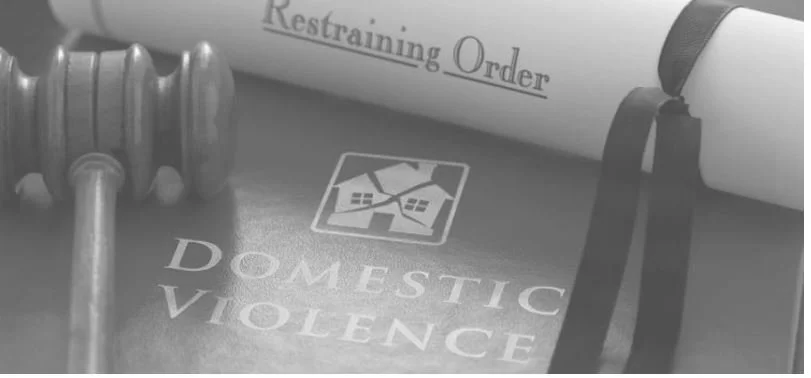When my children were small, each morning began with complaints of “He’s looking at me. He’s looking at me.” My son, ever the nudge, would position a box of cereal or a book between himself and his sister and pretend to read, while actually staring her in the face. She would grow more and more annoyed as her attempts to push the box or book away failed, and the whining began. Now, in the context of satellite surveillance of rapists and domestic abusers, her words are music to my ears. “We’re looking at you. We’re looking at you.”
The ravages of domestic abuse never fade. Fifty years after my escape from a marriage that nearly took my life, the emotional scars are still visible. Happily remarried, I am good at playing the part of confident woman, contented wife and blessed mother. Most of the time, the act does not take much effort. Trust… and time… have honed my performance skills.
In my recent past, going to the post office or grocery store solo was a major accomplishment. Leaving the house after dark alone – well, that is a work in progress. I never allow any female student or guest to leave the Institute alone after dark. Someone always watches from the sidewalk until they are safely in their car. Pumping gasoline is difficult because I feel exposed and vulnerable while waiting for the tank to fill. Seldom do I let the gauge go under the half way mark. “An ounce of prevention…,” as Ben Franklin advised us. Far too many abused women have learned the painful fact that a “cure” is rarely possible.
As if my exposure to domestic abuse was not bad enough, in 2007 my then 27-year old daughter was kidnapped, beaten and repeatedly raped by a maintenance man who worked in the apartment complex where she lived. He used a master key to gain entrance to her apartment and a machete to gain control. For three and a half hours, he abused her. Miraculously, she survived. Her assailant is serving three life sentences plus 35 years for his crime, but as we all know, in the criminal justice system life does not necessarily mean until a convicted felon stops breathing. Needless to say, I am a major proponent of anything that will protect women and children from the very real possibility of pain or death that is too often their fate.
For years, I have read and watched with great interest as more and more states began using Global Positioning Satellites (GPS) to track and monitor violent offenders. According to an article on abuse, all 50 states and the District of Columbia are using GPS technology to constrain pretrial defendants and convicts on probation or parole. GPS monitoring devices are most commonly used by law enforcement in Florida, Texas, California, Massachusetts, and Michigan.
By the latest statistics, the total number of individuals being monitored is over 125,000. That means a lot of women and children are living in fear of their lives on a daily basis. The State of Florida requires mandatory lifetime tracking for perpetrators of crimes against children. The death penalty is now a possibility thanks to a law signed by Governor Ron DeSantis. Along with Florida, Wisconsin, Colorado, Missouri and Oklahoma mandate lifetime GPS monitoring for repeat child predators.
Based on numerous studies, it has been determined that parolees are less likely to assault another person when they know they are being tracked. Since many experts believe that a predilection toward rape and pedophilia is incurable, lifetime monitoring of repeat offenders should be the norm – not the exception – in all 50 states no matter the age of the victim. So should the death penalty.
During my first marriage, my only defenses against stalking and beatings were excellent peripheral vision and a highly tuned sense that danger was near. How exciting it was to learn that advancements like GPS monitoring were available and mandated by the courts! Then, I read the fine print.
Research shows that not all GPS tracking/monitoring systems are alike. Different systems offer varying levels of protection and, depending on the manufacturer, different interpretations of tracking and monitoring. Most companies that make these systems advertise that their control centers are staffed 24 hours a day, seven days a week, 365 days a year. Technically, that is true. There is, however, a caveat not as readily offered.
Tracking merely allows parole/probation officers to see where an offender was when a warning message was sent to their in box – not where that offender is at the present moment. An hour or more might pass before that warning is retrieved and, by then, the offender may already have committed another crime. Monitoring is done in real time, meaning an offender is never out of sight.
Having been at risk far too often in my life, and having seen my daughter’s disfigurement immediately after the attack on her person, I am glad to know that a viable solution is so readily available.
If you or a child in your care has been a victim of abuse, contact your local authorities to find out if GPS technology is available in your area. Should the answer be “Yes,” demand to know what kind and be prepared to fight for real time monitoring. If GPS is not being used to track repeat offenders, find an advocacy group to work with toward that end. The life you save could be your own or that of someone you love.
Only the immediate transmission of a warning will allow sufficient opportunity for an endangered person to take precautionary measures. Anything less is 59 minutes too late!
Donna Carbone is the Executive Director/Playwright in Residence at the Palm Beach Institute for the Entertainment Arts, where education through entertainment is the mission statement.
Please visit: pbinstituteforentertainmentarts.com

